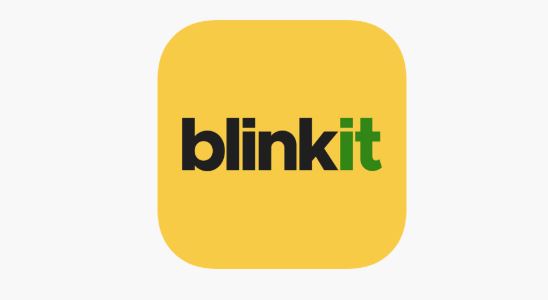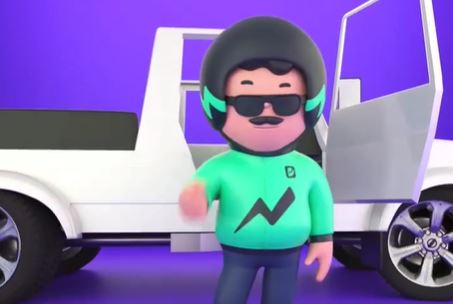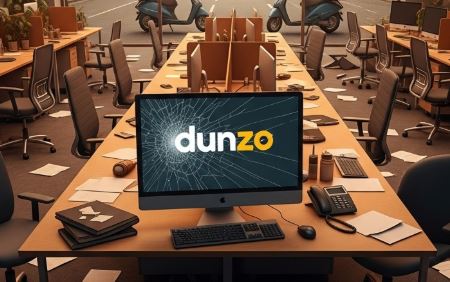Dunzo was an on-demand delivery and hyperlocal services startup that gained significant popularity in the Past. However, over time, the company faltered and lost its market share. Dunzo came up with a unique idea. So many Big Names Invested in Duzo, and the company raised so much money from the investors.
But Still One Big Question: Why Dunzo failed and what startups can learn from it.
Business Model of Dunzo
Dunzo was started in Bengaluru in 2015. Its founders included Kabir Biswas, Dalveer Suri, Anurag Prakash, and Mukund Jetha. The main idea of Dunzo was – “Deliver anything, anywhere”. It was a multi-service platform that offered customers:
- Grocery delivery
- Food delivery
- Medicine delivery
- Parcel and courier services
- Even personal tasks (like paying bills, getting things)
All these facilities were provided through a single app. Initially, its business model was attractive to the users, but later, many flaws were seen in it.
Main reasons for Dunzo’s failure
Dunzo’s biggest challenge was to control operational costs. There were many reasons for this. Dunzo had to pay delivery agents for every order. Whereas this cost became very high when the order value was low.

To attract customers, Dunzo gave huge discounts, which reduced the profit margin. There was a huge cost involved in maintaining real-time tracking, a multi-service platform, and a customer support system.
Thus, Dunzo was incurring losses on every order, which led to a very high cash burn rate for the company.
Tough competition:
Dunzo had to compete with big and funded competitors, such as Swiggy and Zomato. Both these players were far ahead of Dunzo in the food delivery segment. Then Blinkit and BigBasket also came in pictures. These Companies are dominating in grocery delivery.

Rivals like Swiggy Instamart, Blinkit (Zomato), and Zepto offered faster, cheaper deliveries with deeper pockets. Dunzo couldn’t match their aggressive expansion and pricing strategies.
Blinkit got instant access to Zomato’s 15 M+ monthly users. Swiggy cross-sold Instamart to food delivery customers while Dunzo paid 3-4x more for customer acquisition.
Blinkit and Swiggy leveraged their existing assets (Zomato’s tech and food users, Swiggy’s delivery network) to scale profitably. Dunzo, without such strategic assets, burned cash trying to build everything from scratch against better-funded competitors.
Amazon and Flipkart were market leaders in e-commerce and courier services. These companies had more funding, better technology, and a large customer base, in front of which Dunzo could not stand.
What Went Wrong with the Business Model:
Dunzo took the “jack of all trades, master of none” approach. That is, it started several services simultaneously, but could not become an expert in any one. Dunzo tried to deliver everything – food, groceries, medicine, parcels, but could not dominate any segment.
Dunzo was running in big cities, but it could not expand in tier-2 and tier-3 cities.
Funding crunch:
Dunzo initially received funding from investors like Google and Lightbox, but later faced problems: When the valuation of a company falls, it becomes difficult to get new funding. The same happened with Dunzo.

Reliance Huge Investment: Reliance Retail invested $200M in Dunzo (2022), but later shifted focus to its quick-commerce venture (JioMart Express). This was a major blow since Reliance was expected to be a long-term strategic backer. Dunzo’s existing investors (Lightrock, Lightbox, Google) did not lead further rounds.
When the company was continuously running in losses, investors refused to give new funds. Dunzo struggled to secure fresh funding as investors turned cautious amid global economic slowdowns. Reliance (a major backer) reduced its support, leaving Dunzo without a financial lifeline. Investors grew wary as losses mounted (reportedly ₹1,800 crore in FY23), making further funding difficult.
Due to a lack of funding, Dunzo fired 40% of its employees in 2023, which tarnished the company’s image. Layoffs and salary delays in 2023 damaged employee morale and operational stability.
Management mistakes
Dunzo rapidly expanded to 10+ cities without proving profitability in any. High burn on marketing, discounts, and rider incentives with no path to breakeven. For Example, entered Bengaluru, Mumbai, Delhi, Hyderabad, but shut down non-core cities later due to losses.

Heavy incentives for delivery partners (like ₹50–₹100 per order) made operations unviable. Reported ₹1,800 crore loss, with revenue at just ₹54 crore, showing reckless spending.
Dunzo spent money on big celebrity endorsements (like Alia Bhatt), but it did not give returns. When funding dried up (2023), Dunzo had no backup—unlike Zepto, which secured $665M in 2024.
Unlike Zepto (which focused on high-margin categories) or Blinkit (synergy with Zomato), Dunzo lacked a unique differentiator. Its attempts to pivot (from courier services to groceries to quick commerce) confused investors.
Post-pandemic economic pressure:
Many startups faced problems due to the economic slowdown and funding winter after COVID-19. Dunzo also fell prey to this. Customer spending patterns changed (people started paying more attention to discounts). Investors reduced risk-taking, due to which startups like Dunzo could not get funding.

Rising inflation and reduced consumer spending on non-essentials impacted demand for Dunzo’s services. Frequent changes in business focus (from courier services to groceries, then quick commerce) confused users. Dunzo relied on partnerships (like Reliance Retail) for orders, but these didn’t provide enough revenue stability.
Dunzo was an innovative idea, but it failed due to the wrong business strategy, high costs, and weak funding. Other startups should learn from its story that sustainable growth and profitability are the keys to long-term success.

[…] Also Read: Dunzo Rise and Fall […]